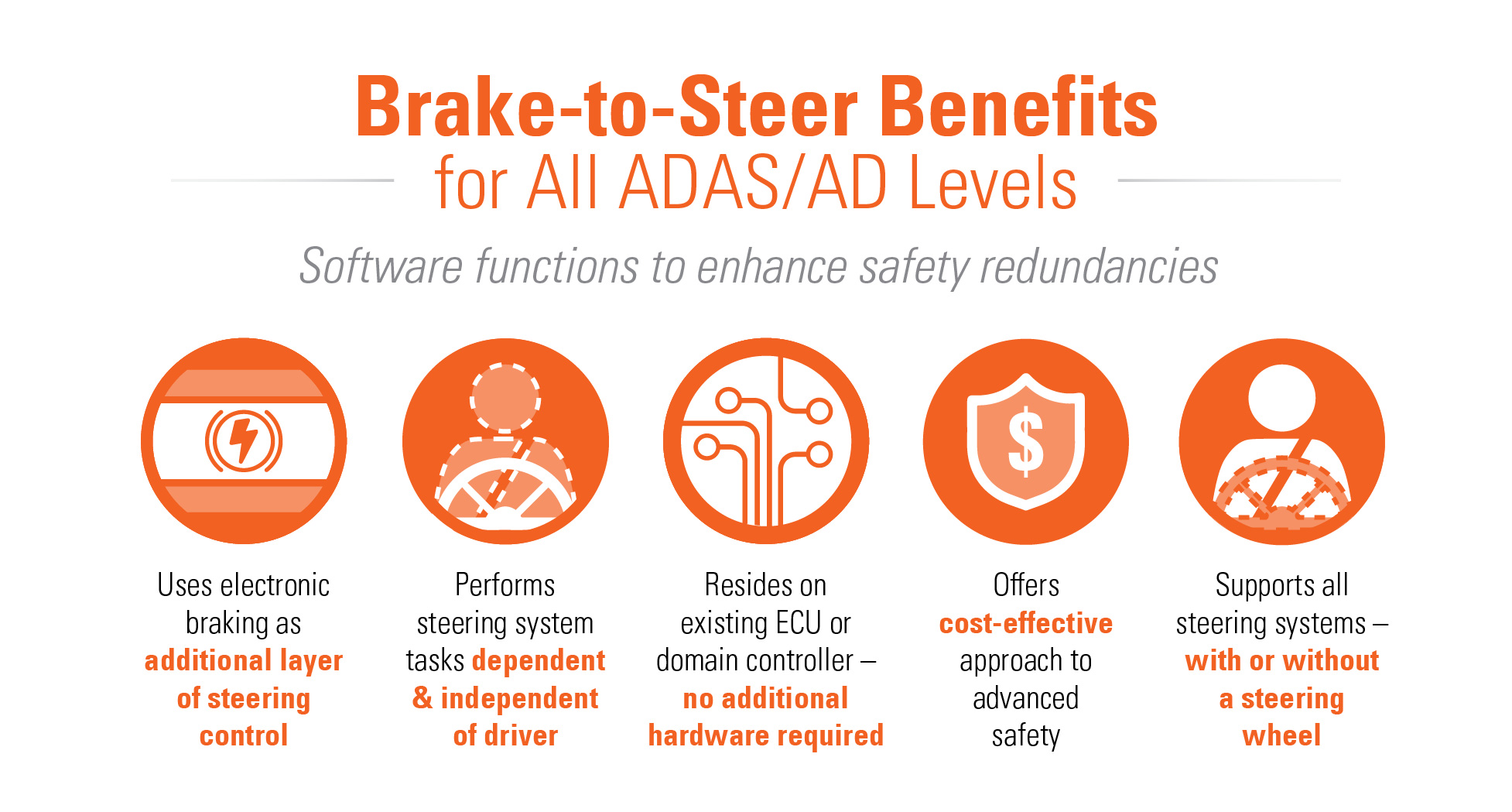Expanding Brake-to-Steer Software Technology for Advanced Safety & Redundancy
May 31, 2022

As development of electric, autonomous and connected vehicles continues, advanced safety is key to enabling these future mobility solutions. Redundancies in vehicle hardware and software help enhance safety by creating the same functionality across numerous vehicle systems so that there is a backup available if needed.
With this in mind, CNXMotion, a joint venture between Nexteer and Continental, has expanded its Brake-to-Steer (BtS) technology with two new software functions that provide backup safety layers for all variants of Electric Power Steering (EPS) and Steer-by-Wire (SbW) systems and across all SAE levels of driving automation (levels 1 – 5).
These new Brake-to-Steer software functions further enable safety redundancies without the cost and complexity of additional hardware. They can help ensure the safety net is always on through driver effort support and steer-by-wire support, as well as automated driving support.
Brake-to-Steer Driver Effort Support
EPS systems are designed with multiple protective layers to ensure the steering safety net is always on. When paired with a traditional EPS system, the new BtS Driver Effort Support function adds another safety layer and can provide up to an additional 25% reduction in torque. While steering traditionally manages the lateral control of a vehicle, BtS enables the braking and powertrain systems to contribute to lateral control to reduce steering efforts when necessary.
Brake-to-Steer Steer-by-Wire Support
SbW replaces the mechanical steering connection between the hand wheel and road wheels with algorithms, electronics and actuators. In this type of steering system, the BtS SbW Support function adds another safety layer by translating the driver’s steering inputs into brake system control of the vehicle’s lateral motion.
Brake-to-Steer Automated Driving Support
Launched in 2020, CNXMotion’s original BtS function pioneered the use of electronic braking as an additional layer of steering control for traditional, highly automated and autonomous vehicles (SAE Levels 4–5). BtS works by activating brakes to cause the vehicle to yaw and follow the curvature commanded by the vehicle trajectory planner. BtS also continuously monitors the forward-looking path to determine the vehicle’s ability to meet the upcoming curvature route. If the vehicle is unable to meet a commanded path, BtS performs an alternative safety maneuver.
Benefits for Drivers and OEMs
The primary benefits of BtS for drivers and OEMs are safety, value and flexibility. Overall, BtS enhances safety through an additional layer of steering redundancy. From a value perspective, BtS leverages a vehicle’s existing steering, braking and powertrain systems with portable software functions that can reside on an existing controller – thus eliminating the need to add hardware and creating a cost-efficient way to prioritize safety needs. With three BtS software functions now available, OEMs also gain the flexibility to add safety and redundancy to all types of vehicles, with or without a driver.
These new BtS software functions highlight how collaboration through our CNXMotion joint venture with Continental leads to innovation in motion control solutions and further enhances the steering safety net for all assisted and automated driving levels.






